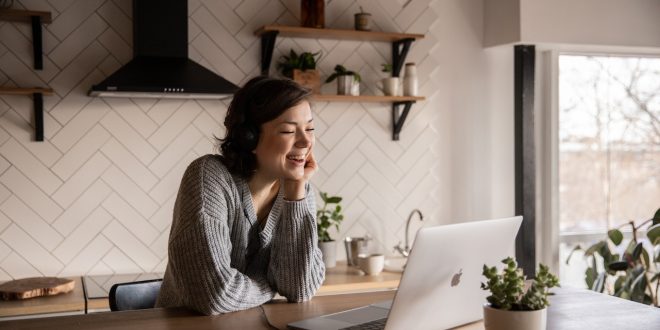Do you ever feel like your home might be triggering physical or emotional symptoms? Well, it could be. It’s no surprise that where we spend most of our time affects our physical and mental well-being. In fact, the environment in which we live can have a huge impact on our lives. Things like living in chaos, clutter, and stress are notorious for causing imbalance, especially in mental health. Let’s take a deeper dive into five ways that the home environment impacts mental health so you can create an optimal living space for wellness and vitality.
Color Choices
Believe it or not, the colors you choose to decorate your home can influence your mood. Warmer tones like red and yellow have long been associated with feelings of happiness, while cooler hues such as blue and green have proven relaxing. Try painting one or more walls in your home in hues that help relax or energize you. If painting your home in these colors is too much of a commitment, try adding throw pillows or artwork with hues that make you feel good.
Natural Light
Natural light can play an invaluable role in maintaining healthy circadian rhythms and supporting positive mental states, according to research. People exposed to more light have fewer symptoms of depression and anxiety than those not receiving enough sun. Try opening curtains or trimming back shrubbery outside your windows so as to maximize natural lighting in each room. For example, a company such as STC, a tree trimming and removal company, can help with this.
Clutter
 Another way the home environment impacts mental health is in its cleanliness and neatness. Untidiness and clutter can be overwhelming to your nervous system and thoughts, leading to feelings of stress and anxiety. In order to maintain an organized home environment, remove or store away unnecessary items. Try using baskets or bins for a cleaner look and purchase furniture with plenty of storage space. Furthermore, keep the exterior free of clutter as much as possible by regularly clearing away yard waste while making sure flower beds, shrubs, and bushes remain well kept up.
Another way the home environment impacts mental health is in its cleanliness and neatness. Untidiness and clutter can be overwhelming to your nervous system and thoughts, leading to feelings of stress and anxiety. In order to maintain an organized home environment, remove or store away unnecessary items. Try using baskets or bins for a cleaner look and purchase furniture with plenty of storage space. Furthermore, keep the exterior free of clutter as much as possible by regularly clearing away yard waste while making sure flower beds, shrubs, and bushes remain well kept up.
Air Quality
Indoor air quality is incredibly important when it comes to mental health. If your home doesn’t get enough ventilation, air pollutants can build up and cause a variety of health problems. This includes headaches, fatigue, and allergies. Invest in an air purifier to help improve the quality of indoor air and make sure you open windows frequently for fresh air. In addition, plants can also be a great way to naturally filter the air in your home. Certain plants have been known to reduce toxins and can make a great addition to any living space.
Comfort
 Our homes should be havens from the stresses of daily life, providing us with an escape. To create an inviting and relaxing space, include items that hold special meaning for you. This can be pictures of family, a soft blanket, special mementos, or even music. In addition, make sure there is enough seating for guests so it’s easy to entertain and have meaningful conversations. The ideal home should make you feel safe and relaxed at all times.
Our homes should be havens from the stresses of daily life, providing us with an escape. To create an inviting and relaxing space, include items that hold special meaning for you. This can be pictures of family, a soft blanket, special mementos, or even music. In addition, make sure there is enough seating for guests so it’s easy to entertain and have meaningful conversations. The ideal home should make you feel safe and relaxed at all times.
Your home environment can have a considerable effect on your mental well-being. From color schemes and air quality, you can change the way you respond to your home. The key is to create an ideal living space that promotes wellness and vitality. Of course, this is individual, so experiment with various things to find what works for you and your family.
 Women's Life Link Be Well, Be Happy, Be YOU!
Women's Life Link Be Well, Be Happy, Be YOU!





